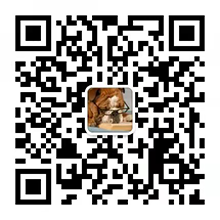副词不可以修饰名词。副词是指在句子中表示行为或状态特征的词,在句中可作状语、表语、补语、定语。在句中主要用作状语,修饰动词、形容词、副词、介词短语或句子。
副词的位置
1.多数副词放在动词后面,或者放在be动词、助动词或情态动词之后,实义动词之前。 如果实义动词后有宾语,则放于宾语之后。
(1)I am also Bush.
我也是布什。
(2)I can also do that.
我也可以这样做。
(3)I also want to play that games.
我也想玩这游戏。
(4)I get up early in the morning every day.
每一天的早晨我都起得很早。
(5)She didn&39;t drink water enough.
她没有喝足够的水 。
2.副词修饰形容词,副词时,一般放在被修饰词之前,但enough除外。
(1)It&39;s rather easy,I can do it.
这很容易,我能做到。
(2)He did it quite well.
他做得相当好。
(3)It&39;s rather difficult to tell who is right.
很难说谁是对的。
(4)He didn&39;t run fast enough to catch the train.
他的奔跑速度不足以快到能够追上火车。
3.频度副词可放在实义动词的前面,情态动词和助动词的后面。
(1)I often help him these days.
这些日子我经常帮助他。
(2)I always remember the day when I first came to this school.
我常常记得我第一次来学校的那一天。
(3)You mustn&39;t always help me.
你不能老是帮助我。
(4)We usually go shopping once a week.
我们通常一周买一次东西。
(5)The new students don&39;t always go to dance.
新学生并不时常去跳舞。
4.疑问副词,连接副词,关系副词以及修饰整个句子的副词,通常放在句子或从句的前面。
(1)When do you study everyday?
你每天什么时间学习?
(2)Can you tell me how you did it?
你能告诉我你如何做的吗?
(3)First,let me ask you some questions.
先让我来问几个问题。
(4)How much does this bike cost?
这辆车子多少钱?
(5)The students were reading when the teacher came into the classroom.
当老师进教室时,学生们正在读书。
5.时间副词和地点副词在一个句中,地点副词在前面,时间副词在后面。
(1)We went shopping in the supermarket at 9 o&39;clock yesterday.
昨天九点钟我们到超市买东西了.
(2)What were you doing in the classroom yesterday afternoon?
昨天下午你在教室里干什么?
(3)The accident took place in the Eleven Avenue one hour ago.
这场事故在一小时前发生在十一号大街。
6.否定副词在句首,句子要部分倒装。
Never have I felt so excited!
我从来没有觉得这么激动!



